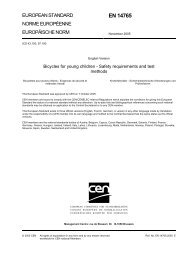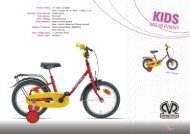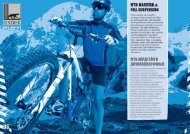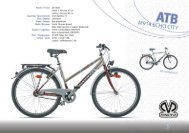EN 14766:2005 - 64_e_stf - Baltik vairas
EN 14766:2005 - 64_e_stf - Baltik vairas
EN 14766:2005 - 64_e_stf - Baltik vairas
- No tags were found...
Create successful ePaper yourself
Turn your PDF publications into a flip-book with our unique Google optimized e-Paper software.
<strong>EN</strong> <strong>14766</strong>:<strong>2005</strong> (E)4.6.7.5.1.4 Force applied to the handbrake-leversI) Magnitude and position of force on handbrake-leversApply a handgrip force not exceeding 180 N at the point as specified in 4.6.2.3. Check before and after each seriesof test runs to verify the lever force.II)Optional brake-force application deviceIt is permissible to use a test mechanism to operate the handbrake-lever, and when such a device is used, it shallmeet the requirements of 4.6.7.5.1.4 I) and shall additionally control the rate of application of the handbrake-leverforce such that 63 % of the maximum force is attained in not less than 0,2 s.If the operating force on the handbrake lever is applied by means of belt or a wire, ensure that the contact width isnot greater than 5 mm if the accuracy requirement above is to be met.4.6.7.5.1.5 Running-in the braking surfacesA running-in process shall be conducted on every brake before performance testing is carried out.Apply the brakes for not less than three seconds to maintain steady deceleration whilst the bicycle is being riddenat a speed of approximately 16 km/h. Repeat this operation 10 times.4.6.7.5.1.6 Test method – test runs under dry conditionsPedal the test bicycle until the specified test velocity is attained (see Table 1), then stop pedalling and apply thebrakes. The bicycle shall be brought to a smooth, safe stop (see 4.6.7.4.2 i) ).19







